Sol Summary – November 27th
Sol: 0
Summary Title: Arrival and Preparations
Author’s name: Kristine Ferrone
Mission Status: Pre-simulation
Sol Activity Summary: Arrival, unloading, habitat familiarization
Look Ahead Plan: pending final COVID test result, complete required training and first EVAs tomorrow
Anomalies in work: N/A
Weather: sunny/clear and cool with light wind
Crew Physical Status: mild adjustments to low-humidity and high-altitude conditions, but generally quite good
EVA: N/A
Reports to be filed: Journalist, Commander, Operations, Photos, HSO checklist, EVA request (No Green Hab report since crew did not access)
Support Requested: N/A
Journalist Report – November 27th
Sol 0 Crew Journal:
Crew 269 arrived at the Mars Desert Research Station around 1 pm Saturday, November 27th, to clear blue skies, dry dust blowing in the air, and the cool winter air nipping at their noses. The crew made quick work moving luggage and experiments into the habitat in a well-executed relay. Packages, duffle bags of various shapes, colors and sizes, and boxes full of experiments and equipment made their way up the charred black and brown front steps of the white painted habitat, through the double insulated white painted airlock doors, past the bronze Mars Society plaque, and up the steep metal steps to the second floor.
The rumbling of the furnace could be heard throughout the first floor in protest to the encroaching November air, as the crew came and went to finish unpacking. The smell of bread and assorted lunch meats flooded the second floor, as the crew took stock of their handywork and enjoyed lunch. The rustling of jackets and the thud of boots could be heard in the late afternoon, as our adventures prepared to explore the other facilities branching off the main habitat.
The smell of hot cider, the sound of typing keyboards, and the whisper of cooks in the kitchen occupied the evening, as Crew 269 settled in.
Trevor Jahn
Commander Report – November 27th
Sol: 0
Summary Title: Arrival & Mission Preparation
Author’s name: Dr. Kristine Ferrone, Commander
Mission Status: Nominal
Commander’s Report:
Crew 269 arrived at the Hab at approximately 12:45 PM MT and received a basic Hab tour from Sergii. The crew then unloaded luggage and experiment equipment from both the CrewCar and the Aerospace fleet van and into the Hab. The crew also stocked food items (both MDRS-provided and personal) and completed basic meal planning for the duration of the mission. The crew explored the area around the Hab on foot for basic familiarization and took photos. The crew then completed the HSO arrival checklist and discussed basic safety and egress procedures with Shannon. The evening was spent writing reports and preparing rice and vegetables with Thai peanut sauce for dinner; the first round of bread dough was also prepared and started in the bread maker. Crew was not able to commence required training with Shannon and Sergii due to one outstanding COVID test result; hoping to receive this result soon so training can be completed in the morning tomorrow.
Operations Report – November 27th
SOL: 0
Name of person filing report: Alli Taylor
Non-nominal systems: N/A
Notes on non-nominal systems: N/A
ROVERS
Spirit rover used: No
Hours: (before EVA) N/A
Beginning charge: (Before EVA) N/A
Ending charge: (On return from EVA, before recharging) N/A
Currently charging: Yes
Opportunity rover used: No
Hours: N/A
Beginning charge: N/A
Ending charge: N/A
Currently charging: Yes
Curiosity rover used: No
Hours: N/A
Beginning charge: N/A
Ending charge: N/A
Currently charging: No
Perseverance rover used: No
Hours: N/A
Beginning charge: N/A
Ending charge: N/A
Currently charging: No
General notes on rovers: N/A
Summary of Hab operations:
WATER USE: N/A gallons
Water (static tank): N/A gallons
Static tank pipe heater (on or off): Unknown
Static tank heater (On or off): Unknown
Toilet tank emptied: No
Summary of internet: Good
Summary of suits and radios: N/A
Summary of GreenHab operations: N/A
WATER USE: N/A gallons
Heater: On
Supplemental light: Unknown
Harvest: N/A
Summary of ScienceDome operations: N/A
Dual split: Unknown
Summary of RAM operations: N/A
Summary of any observatory issues: N/A
Summary of health and safety issues: N/A
Questions, concerns and requests to Mission Support:
Summary of crew car usage:
Mileage: 209008 upon receipt of car
Oil check: good (see photo)
Check for damage: we did notice a grounding wire or something under the hood that is not connected (see photo), window wind guards/visors were visibly damaged, hub cap inside the back of car, and something spilled in the back cup holder area (see photo). On the drive from Grand Junction to MDRS, we did have a check engine light pop on midway through the drive.
Gas tank: full upon delivery by crew 268, filled by crew 269 upon arrival to Hollow Mountain in Hanksville.
Mission Plan – November 27th
Research
The Aerospace Corporation does not currently have a standing Institutional Review Board (IRB) for human-subject research. Aerospace has leveraged their Environmental Health & Safety (EHS) organization’s Project Safety Review (PSR) which accounts for any hazardous materials that may be encountered during a planned project. The crew members have completed identified training. The Aerospace crew has also received corporate concurrence from General Counsel, Human Resources, Office of Chief Financial Officer, and Corporate Communications with no noted concerns. The senior leadership of the Aerospace Civil Systems Group (CSG), including Sr. VP and General Manager of Human Exploration & Spaceflight (HESF), have concurred on the scope and application of research within this proposed mission plan, and agree it does not contain human-subject research, and that Aerospace crew members will abide by standard ethics practices. For any future analog missions that contain customer-sponsored activities, such activities will be reviewed by an IRB of the originating/owning institution. No crew health data will be collected regarding Crew 269 activities.
Notional EVA Plan
The EVA plan will be considered research led by the crew Executive Officer. This notional plan considers mission priorities, flight rules, and high-level activity durations. Crew 269 will first consult with MDRS Mission Control and MDRS protocols for planning the following day’s EVAs. The Crew 269 EVA plan provides 11 planned EVAs (on 9 mission days), sometimes with multiple objectives within a single EVA. Each EVA crew will stay together, even when there are multiple objectives on an EVA, and will maintain communications with the IVA crew. The EVA plan considers 1 built-in “rest” days and 1 built-in “back up” where the crew does not perform EVA activities; these serve as a backup for any rescheduling due to issues with prior EVAs, weather delays, etc. Actual targeted locations for EVA activities will be determined by the crew while on-site during the mission, in order to account for observations and feedback from crew members in mission planning.
Table 4 provides a sol-by-sol look at the nominal EVA and activity plan. On Sol 6, after retrieving the Mirror experiment, IVA crew will need to inspect the payload. A 2nd EVA will be required to re-deploy the payload. The balloon launch will occur on Sol 10, to give ample time for the crew to get comfortable on site, accomplish a number of objectives, and minimize the time between balloon launch and retrieval. Our final full day (Sol 12) at MDRS will be reserved as a “Media Day”. More information on or STEM outreach objectives can be found in section 9 of this document.
Table 4 Notional EVA Plan
Notional crew EVA assignments have been completed, accounting for each crew member conducting 5-6 EVAs over the course of the mission. Crew not assigned to EVA will be responsible for IVA (cap com) and recording notes when in communication with the crew. Table 5 was created to make sure the planned EVAs were distributed evenly including use of the MDRS electric vehicles “rovers”.
Table 5 Notional Crew EVA Assignments
Exploration efficiency will be a technical evaluation in conjunction with all crew inputs, recorded statistics, notes, and contributions. The IVA crew will be recording time stamps during EVA activities in order to understand planned versus actual for EVA activities. The IVA crew will act as a temp mission control or “cap com” for procedures and communications. Overall evaluation of the activity timeline, replanning activities, use of Aero support team, crew autonomy levels, and communication methodology influence on EVA will be considered.
No crew health data will be collected regarding EVAs.
Communication Methodology
Led by Barbara Braun, (developed by Braun’s middle schooler) the crew communication methodology will entail the crew will utilizing a discord server for “near real-time” experiment feedback from Aerospace mission support Subject Matter Experts (SMEs) on EVAs and activity replanning, as well as provide an opportunity for STEM outreach. The discord server will account for time/communication delays, with multiple private channels for crew to keep in communication with family, Aerospace mission support personnel, and teachers from around the United States. The discord server will allow the crew to feel connected to friends and family with a low-bandwidth SMS texting level of capability.
Project Phantom Demo
The Phantom Demonstration is a Virtual Reality (VR) and Augmented Reality (AR) exploration methodology led by the crew Technical Officer, Trevor Jahn (developed in conjunction with his Aerospace team personnel). Project Phantom will be a key highlight of our mission, combining 3D model generating technology, Virtual Reality (VR), and Augmented Reality (AR) for space-based application. The crew will collect imagery data via different photogrammetry techniques, which involves stitching together large collections of overlapping photographs to create 3D digital models. The crew will collect this imagery via camera-mounted rover, camera-mounted drone, and hand-held camera, at areas of interest. The 3D model of the operational environment will be used for EVA mission planning, in conjunction with AR activities during EVAs.
EVA Tool Demo
The EVA Tool Demonstration will be led by Kristine Ferrone and Alli Taylor as a continuation from the International Institute for Astronautical Sciences (IIAS) EVA 103 course, with research conducted in the July 2021 timeframe. For MDRS 269 tool demonstration will include radiation scanning and sample collection techniques. It may be important to survey the surface layer of regolith for radiation before excavating an area of interest. Advantages of local radiation mapping include production of higher resolution surveys as opposed to remote mapping, limited distortion of measurements by planetary atmospheres, and the ability of an astronaut to rake or dig within the regolith to survey beyond the immediate surface. The latter is particularly important to distinguish between radiation emitted by regolith activated by solar particle event (SPE) or galactic cosmic radiation (GCR) at ~cm depths, albedo (reflected) primary or secondary solar or galactic cosmic radiation, and native/naturally occurring radioisotope content within the regolith. EVAs should collect samples that can be further studied back on Earth. Potential samples at different size grains may be advantageous depending on the priorities of the sample collection activity. Crew may demo sifting of the sample for targeted grain size in attempt to provide beneficiation of sample before further processing (such as in ISRU use cases). If a sample is taken, the team should first photograph the area, and photograph the sample with a label, before bagging the sample. No crew health data will be collected regarding EVA tool demonstration.
Mirror Surface Coating Experiment
The Mirror Surface Coating Durability experiment, overseen at MDRS by Ashley Kowalski and Trevor Jahn, developed in conjunction with on-going research at Aerospace’s Physical Sciences Laboratory (PSL), will allow the crew to deploy a payload containing small mirrors with thin-film coatings, monitor mirror surface degradation under simulated accelerated environmental exposure, and periodically inspect the payload during the mission. Data from inspections and the final collection of the payload will return the payload to the PSL for further inspection post-mission. Mirror surfaces simulate delicate science instrumentation, as high-reflectivity Ag mirrors are widely used in space applications. However, exposure to environmental contaminants rapidly degrades optical performance, where corrosion results in reduced reflectivity and increased scatter. This degradation has serious implications on the mirror performance lifetime on planetary surfaces such as Mars. Payload data will be compared to control data, or laboratory simulated environments from prior experiments. No crew health data will be collected regarding deployment/collection/inspection of mirror experiment.
Athena/ HYFIT Exercise Operations
Operational evaluation led by Barbara Braun and Kristine Ferrone. Astronauts spend a significant amount of time completing mission tasks so finding time for feasible amounts of exercise is a priority. Astronauts are also in confined quarters so the space available for exercise is limited, therefore minimizing the size and mass of exercise equipment is necessary. Taking these considerations into account, the modified Athena protocol will allow for crew members to break their exercise into three 15-minute increments throughout the day. Crew will also be offered the ability to “choose their own adventure” from the following workouts:
-
HyGear resistance bands (https://hygearfit.com/)
-
Not a paid endorsement, Aerospace and HYFIT established a memorandum of understanding (MOU)
-
Pre-choreographed workout options to follow via HYFIT app (pre-downloaded)
-
-
Total Body Workout
-
Squats, lunges, pushups/shoulder tap, sit-ups/crunches, skater jumps, glute bridge, high knees, leg lifts, hovers, etc. in timed sets.
-
Benefit of aerobic exercise with no equipment needed
-
Pre-choreographed workout videos pre-downloaded as an option
-
-
Yoga/meditation/stretching/other
-
Pre-choreographed workout videos pre-downloaded as an option
-
Good alternate to have on busy, stressful, or long EVA days
-
Anonymous evaluation and assessment of the style of workout chosen, and how it fit into the workday (or changes made such as fewer workouts) will be provided. No crew health data will be collected regarding the workout routine.
High Altitude Balloon
Led by Matthew Eby, the crew will explore EVA launch of a high-altitude balloon experiment to complement ground-based weather observations, or in response to a Martian atmospheric event (dust storm). This experiment will evaluate the technical ability of a suited 2-person crew to prepare and launch a weather balloon, followed by receipt of telemetered data to the habitat. Experiment factors include low surface wind, cloud ceiling minimums, precipitation. The crew will need procedures for safe handling of a helium bottle, which will be stored in a secured area during transit and prior to the event. The balloon will be exempt from permit due to size and will have regulation of “no undue hazard”. The crew will provide a pre-launch notification to the FAA traffic control and provide expected rise rate (1000 ft/min) and location (about 5 mi west of Hanksville). No crew health data will be collected regarding the deployment of the balloon.
STEM Outreach
The Aerospace MDRS 269 crew has a number of STEM outreach objectives for their inaugural mission:
-
The Aerospace MDRS 269 crew will be featured on Aerospace’s The Space Policy Show (SPS) on November 17th leading up to the mission.
-
This event leverages the SPS audience from over 100 prior episodes
-
-
The Aerospace MDRS 269 crew will be hosting a live Audience with Aerospace event during their time at MDRS on Friday December 9th (Sol 12, Media Day, not in simulation) on Zoom.us
-
This event leverages the Aerospace STEM email distribution list, with interest from throughout the United States
-
-
The Aerospace MDRS 269 crew will have a Discord channel for registered STEM participants, where the crew can respond to questions asked by anyone who signs up to engage with the crew on the Discord server. The crew can respond to questions in their free time during the mission. The discord server will account for time delay to/from Mars!
-
Aerospace will host a corporate videographer on our Media Day Dec. 9th to capture footage for post-mission production footage (a separate shoot schedule will be provided)
-
1:1 Interviews
-
Staging a few key experiments
-
Group photos
-
-
Aerospace will be coordinating with their social media team prior to the mission and providing content for socials throughout the mission.
Mapping to LEAG Analog Objectives
Our crew has taken an initial cut at how we think our mission activities could inform some of the published Lunar Exploration Analysis Group (LEAG) Analog Objectives for Artemis (AOA). Any contributions to these areas would be relevant to solving near term exploration challenges, as lunar operations will be considered an analog for future Mars missions. A more detailed look at how MDRS operations or Aerospace analog operations could contribute to these areas will be provided in a final mission report.
Table 6 Crew Activities Aligned to LEAG Analog Objectives
|
Crew 269 Activity Name |
Summary |
Requires EVA |
Tie to the Lunar Exploration Analysis Group (LEAG) Analog Objectives for Artemis (AOA) Specific Action Team (SAT) report appendices |
|
Notional EVA Plan and efficiency |
-Record overhead vs utilization time spent, planned vs actual time allocation for activities, replanning of activities -Record notes for utilization of Aerospace mission support -Implement communications methodology (discord channels) |
During all |
A; Science support room (SSR) integration and structure K; Communications Architecture L; Crew autonomy |
|
Phantom AR/VR |
-Eval series of imagery collection techniques via multiple methods -Perform/send data processing for VR -Use of AR in EVA for navigation, site inspection |
Yes |
C; Instrumentation F; Imaging I; Documentation J; Advanced Technologies K; communications architecture L; crew autonomy N; Location/Navigation O; Test Design |
|
EVA Tool Evaluation |
-Demo conops for radiation tool -Demo sample collection conops |
Yes |
F; Imaging (TBD) G; Sampling (TBD) H; Tool and Tool/Sample/Payload Management |
|
Mirror Surface Coating Experiment |
-Payload deployment -Scientific inspection, monitoring, measurements |
Yes |
C; Instrumentation |
|
Athena Exercise Protocol |
-Conduct 15m x3 workouts in daily routine with HYFIT equipment |
No |
L; Crew autonomy |
|
Space Weather Monitoring |
-Sun spot counting on solar observatory |
No |
|
|
Atmospheric High-Altitude Balloon |
– Balloon deployment on EVA |
Yes |
Bio, Crew Photos – November 27th
Dr. Kristine Ferrone
Lead Technologist for Human Spaceflight, Systems Technology Group, The Aerospace Corporation
MDRS 269 Mission Role: Commander
Hometown: Pittsburgh, Pennsylvania
Studied: Medical Physics, Sports Medicine, Business, Physics and Astrophysics
Schools: University of Texas MD Anderson Cancer Center; University of Houston; University of Florida; Carnegie Mellon University; United States Sports Academy
Favorite thing about Mars: Mt. Olympus, ice caps, and the expanse of landmass to explore
About Kristine: Lived and worked at the Mars Society’s Flashline Mars Arctic Research Station in Nunavut, Canada; served as flight controller for NASA’s International Space Station; certified as a volunteer firefighter, pilot, SCUBA diver, and U.S. Coast Guard Auxiliary air crew.
Dr. Kristine Ferrone has studied the effects of space radiation and supports a variety of programs as a radiation physicist, including a joint Air Force/NASA project developing space nuclear power technologies, a radiation-hardened battery project for NASA Innovative Advanced Concepts, and theActive Radiation Dosimeter project for NASA’s xEMU spacesuit.
Allison Taylor
Senior Project Leader, Human Exploration and Spaceflight Division, The Aerospace Corporation
MDRS 269 Mission Role: Executive Officer
Hometown: Enfield, New Hampshire
Studied: Physics and Space Science, Space Studies
Schools: Florida Institute of Technology; University of North Dakota
Favorite thing about Mars: Our Solar System’s largest volcano!
About Alli: Lives in northern Virginia with her husband and three children. As a family they enjoy LEGO, hiking, and training in Tae Kwon Do. Alli loves to do things that bring her joy, like explore new places, roller skate, and play Beat Saber on expert. She is an athlete and volunteer with NOVA Roller Derby. Alli also loves to mentor kids through STEM initiatives and to encourage them to explore and to pursue their passions.
Alli Taylor supports NASA’s Artemis missions through NASA’s EVA & Human Surface Mobility Program and Lunar Terrain Vehicle Project, developing processes, operational concepts, and requirements for future lunar surface assets.
Ashley Kowalski
Project Leader, International Partnerships Department, The Aerospace Corporation
MDRS 269 Mission Role: Crew Engineer
Hometown: Baltimore, Maryland
Studied: Mechanical and Aerospace Engineering
Schools: George Washington University
Favorite thing about Mars: Its potential for signs of ancient life under the Martian surface
About Ashley: Fluent in Polish, proficient in Russian and German; enjoys performing in musicals and theater productions, stand-up paddleboarding, traveling, learning languages, and playing and watching soccer.
Ashley Kowalski provides technical support to the U.S. Space Force Space Systems Command International Affairs Office, helping develop a coalition space enterprise through international partnerships with U.S. allies. She recently served as Flight Engineer for SIRIUS-21, an eight-month international ground-based space simulation, or astronaut analog study, to study effects of isolation and confinement on human psychology, behavioral health, and physiology; crew dynamics; and crew autonomy.
Trevor Jahn
Senior Member of the Technical Staff, Space Architecture Department, The Aerospace Corporation
MDRS 269 Mission Role: Technology Officer
Hometown: Orono, Minnesota
Studied: Aeronautical and Astronautical Engineering
Schools: Purdue University
Favorite thing about Mars: Carbon-dioxide snow clouds and snowfall
About Trevor: Is a competitive cyclist (racing regularly for the past decade all over the Midwest and West Coast); enjoys playing tennis, scuba diving, visiting family and friends, and special summer days by the lakes in Minnesota. He also enjoys 3D printing, tinkering with electronics, and finding ways to study and further his Aerospace knowledge base.
Trevor Jahn directly supports NASA Johnson Space Center as part of the Artemis Lunar Architecture Team and is leading development at Aerospace of an innovative augmented reality/virtual reality (AR/VR) technology for future space use.
Matthew Eby
Engineering Specialist, Engineering and Technology Group, The Aerospace Corporation
MDRS 269 Mission Role: GreenHab Officer
Hometown: Littleton, Colorado
Studied: Mechanical and Aerospace Engineering
Schools: Johns Hopkins University; University of Colorado
Favorite thing about Mars: Reuyl (84 km-wide impact crater)
About Matthew: Is an unpaid geology field assistant for his big sister, exploring Martian terrain here on Earth; facilitated STEM high altitude balloon flights for K-12 students; is the current record-holder for Slowest Known Time crossing America by bicycle at an average velocity of 1.24 mph.
Matthew Eby works with mechanisms for Space Force launch vehicle and satellite programs. Recently, he undertook a research project, MARSDROP, to adapt Aerospace’s REBR vehicle for potential use as an inexpensive Mars entry vehicle. He was a math model keeper for NASA’s Space Shuttle and a stage separation analyst for the follow-on ARES-1 vehicle.
Barbara Braun
Principal Director, Corporate Chief Engineer’s Office, The Aerospace Corporation
MDRS 269 Mission Role: Health & Safety Officer
Hometown: Somerville, Massachusetts
Studied: Aeronautics, Astronautics, Physics, Mechanical Engineering
Schools: Massachusetts Institute of Technology; University of New Mexico
Favorite thing about Mars: Its potential for exploration and colonization
About Barbara: Is a licensed Emergency Medical Technician (EMT) with 20+ years of experience in the field; has served in New Mexico as a firefighter, EMT, and volunteer lieutenant with Bernalillo County Fire and Rescue and with the Village of Tijeras Fire and Rescue Department.
Barbara Braun has led Aerospace support to the Space Rapid Capabilities Office and the U.S. Department of Defense Space Test Program. She is also an Aerospace Center for Space Policy and Strategy Partner and has written extensively on policy and mission assurance concerns for small and non-traditional satellites.
Bio, Crew Photos – November 27th
Dr. Kristine Ferrone
Lead Technologist for Human Spaceflight, Systems Technology Group, The Aerospace Corporation
MDRS 269 Mission Role: Commander
Hometown: Pittsburgh, Pennsylvania
Studied: Medical Physics, Sports Medicine, Business, Physics and Astrophysics
Schools: University of Texas MD Anderson Cancer Center; University of Houston; University of Florida; Carnegie Mellon University; United States Sports Academy
Favorite thing about Mars: Mt. Olympus, ice caps, and the expanse of landmass to explore
About Kristine: Lived and worked at the Mars Society’s Flashline Mars Arctic Research Station in Nunavut, Canada; served as flight controller for NASA’s International Space Station; certified as a volunteer firefighter, pilot, SCUBA diver, and U.S. Coast Guard Auxiliary air crew.
Dr. Kristine Ferrone has studied the effects of space radiation and supports a variety of programs as a radiation physicist, including a joint Air Force/NASA project developing space nuclear power technologies, a radiation-hardened battery project for NASA Innovative Advanced Concepts, and theActive Radiation Dosimeter project for NASA’s xEMU spacesuit.
Allison Taylor
Senior Project Leader, Human Exploration and Spaceflight Division, The Aerospace Corporation
MDRS 269 Mission Role: Executive Officer
Hometown: Enfield, New Hampshire
Studied: Physics and Space Science, Space Studies
Schools: Florida Institute of Technology; University of North Dakota
Favorite thing about Mars: Our Solar System’s largest volcano!
About Alli: Lives in northern Virginia with her husband and three children. As a family they enjoy LEGO, hiking, and training in Tae Kwon Do. Alli loves to do things that bring her joy, like explore new places, roller skate, and play Beat Saber on expert. She is an athlete and volunteer with NOVA Roller Derby. Alli also loves to mentor kids through STEM initiatives and to encourage them to explore and to pursue their passions.
Alli Taylor supports NASA’s Artemis missions through NASA’s EVA & Human Surface Mobility Program and Lunar Terrain Vehicle Project, developing processes, operational concepts, and requirements for future lunar surface assets.
Ashley Kowalski
Project Leader, International Partnerships Department, The Aerospace Corporation
MDRS 269 Mission Role: Crew Engineer
Hometown: Baltimore, Maryland
Studied: Mechanical and Aerospace Engineering
Schools: George Washington University
Favorite thing about Mars: Its potential for signs of ancient life under the Martian surface
About Ashley: Fluent in Polish, proficient in Russian and German; enjoys performing in musicals and theater productions, stand-up paddleboarding, traveling, learning languages, and playing and watching soccer.
Ashley Kowalski provides technical support to the U.S. Space Force Space Systems Command International Affairs Office, helping develop a coalition space enterprise through international partnerships with U.S. allies. She recently served as Flight Engineer for SIRIUS-21, an eight-month international ground-based space simulation, or astronaut analog study, to study effects of isolation and confinement on human psychology, behavioral health, and physiology; crew dynamics; and crew autonomy.
Trevor Jahn
Senior Member of the Technical Staff, Space Architecture Department, The Aerospace Corporation
MDRS 269 Mission Role: Technology Officer
Hometown: Orono, Minnesota
Studied: Aeronautical and Astronautical Engineering
Schools: Purdue University
Favorite thing about Mars: Carbon-dioxide snow clouds and snowfall
About Trevor: Is a competitive cyclist (racing regularly for the past decade all over the Midwest and West Coast); enjoys playing tennis, scuba diving, visiting family and friends, and special summer days by the lakes in Minnesota. He also enjoys 3D printing, tinkering with electronics, and finding ways to study and further his Aerospace knowledge base.
Trevor Jahn directly supports NASA Johnson Space Center as part of the Artemis Lunar Architecture Team and is leading development at Aerospace of an innovative augmented reality/virtual reality (AR/VR) technology for future space use.
Matthew Eby
Engineering Specialist, Engineering and Technology Group, The Aerospace Corporation
MDRS 269 Mission Role: GreenHab Officer
Hometown: Littleton, Colorado
Studied: Mechanical and Aerospace Engineering
Schools: Johns Hopkins University; University of Colorado
Favorite thing about Mars: Reuyl (84 km-wide impact crater)
About Matthew: Is an unpaid geology field assistant for his big sister, exploring Martian terrain here on Earth; facilitated STEM high altitude balloon flights for K-12 students; is the current record-holder for Slowest Known Time crossing America by bicycle at an average velocity of 1.24 mph.
Matthew Eby works with mechanisms for Space Force launch vehicle and satellite programs. Recently, he undertook a research project, MARSDROP, to adapt Aerospace’s REBR vehicle for potential use as an inexpensive Mars entry vehicle. He was a math model keeper for NASA’s Space Shuttle and a stage separation analyst for the follow-on ARES-1 vehicle.
Barbara Braun
Principal Director, Corporate Chief Engineer’s Office, The Aerospace Corporation
MDRS 269 Mission Role: Health & Safety Officer
Hometown: Somerville, Massachusetts
Studied: Aeronautics, Astronautics, Physics, Mechanical Engineering
Schools: Massachusetts Institute of Technology; University of New Mexico
Favorite thing about Mars: Its potential for exploration and colonization
About Barbara: Is a licensed Emergency Medical Technician (EMT) with 20+ years of experience in the field; has served in New Mexico as a firefighter, EMT, and volunteer lieutenant with Bernalillo County Fire and Rescue and with the Village of Tijeras Fire and Rescue Department.
Barbara Braun has led Aerospace support to the Space Rapid Capabilities Office and the U.S. Department of Defense Space Test Program. She is also an Aerospace Center for Space Policy and Strategy Partner and has written extensively on policy and mission assurance concerns for small and non-traditional satellites.
Supplemental Operations Report – November 26th
Name of person filing report: Shannon Rupert
Reason for Report: Routine/crew changeover
Non-nominal systems: Generator
Action taken for non-nominal systems: Since we began running the generator this season, we have noticed a lag in the motor. On Nov 24th, we had a brown out during the night. The power monitor in my trailer was sounding an alert so we turned the generator off at 5 am. Later that day we serviced the generator completely and did some testing. The brown out was not caused by the power load, as the generator dragged both when connected to the system and when it was not. So we are now going to have the propane provider check the fuel regulator to see if there is a problem in that part of the system.
Generator: We are running it about 13 hours a day right now, which is normal for this time of year. On Nov 25th, we replaced the air filter (since the one I had installed on the 12th was one that had been briefly used last season, checked all parts, cleaned air intakes, changed spark plugs. We need to change the oil again but are waiting for the shipment of oil.
ScienceDome Dual Split: off
Solar— Nominal.
Solar— SOC Last 24 hours:
Max 100%
Min 65%
Avg 78.1%
Propane Reading, station tank – 72%
Propane Reading, director tank— 80%
Propane Reading, intern tank— 72%
Propane Reading, generator— 59%
Ethanol Free Gasoline – 0 gallons
Water (static tank) – 550 gallons
Water in GreenHab – 200 gallons
Water in ScienceDome: 0 gallons
Water (Outpost tank) – 250 gallons
Hab toilet tank emptied: check regular operations reports
Sojourner rover used: no
Hours: not noted
Beginning charge: 100
Ending charge: 100
Currently charging: yes
Notes on rovers: nothing to report
ATV’s Used: (Honda, 350.1, 350.2, 300): Honda
Reason for use: charging battery
Oil Added? no
ATV Fuel Used: 0 Gals
# Hours the ATVs were Used today: 0
Notes on ATVs: Currently waiting to be picked up for serving
HabCar used and why, where? Yes, to town
CrewCar used and why, where? Yes, to town and to Grand Junction
Luna used and why, where? No
General notes and comments: Tabs for the year were purchased for the 2018 rovers and the HabCar. That means all vehicles are registered until next year.
Summary of internet: Nominal. HudgesNet is currently off, and we plan to reroute it for crew use and keep Starlink at the Outpost except when crews are out of sim. The new iMac has been installed at the HabCom Station on the lower deck.
Summary of suits and radios: Sergii switched out one battery. We also found a cache of dead batteries in the cabinet so we will need to get those recycled soon.
Campus wide inspection, if action taken, what and why? Which reminded me: we received a notice from the state to remove the old batteries we had and also to secure our gas cans so we did this a couple of weeks ago but I think I forgot to note it in my earlier reports so I am adding it here. It was completed the same day as we received the notice.
Summary of general operations: Started work on moving the conduit.
Summary of Hab operations: New lights installed in toilet room and shower room. We found the missing raceway piece and need to paint and install it still. Pipe under the kitchen sink was securely repaired. New pillows were put in all staterooms.
Summary of Outpost operations: Nothing to report
Summary of GreenHab operations: Plants were fertilized. Tomato cages were installed.
Summary of ScienceDome operations: Nothing to report
Summary of RAM operations: Nothing to report
Summary of any observatory issues: Nothing to report
Summary of health and safety issues: Nothing to report
Questions, concerns, supplies needed and requests: n/a


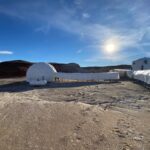
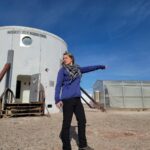



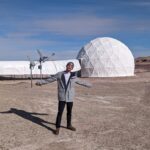


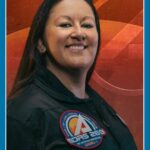
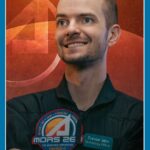
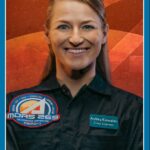
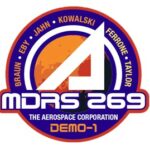
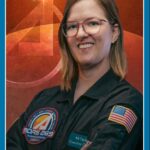
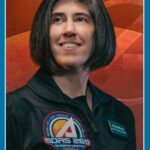

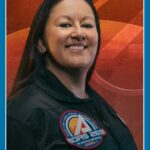
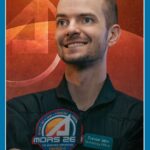
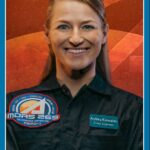
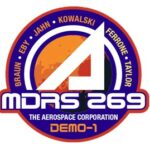

You must be logged in to post a comment.